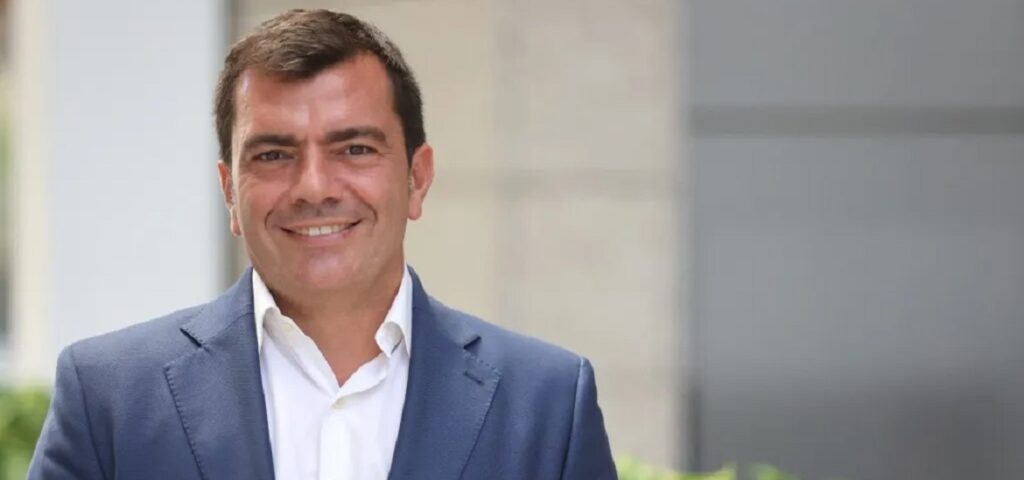The victims of a devastating helicopter crash in New York City’s Hudson River have been identified as Agustín Escobar — the CEO of Siemens Spain — his wife, and their three children. The Spanish family of five was among six people who perished when a tour helicopter plunged into the river near Lower Manhattan on Thursday afternoon.

The aircraft, operated by New York Helicopter, was conducting a sightseeing tour when it tragically went down just off the New Jersey side of the Hudson, around 3:15 p.m., authorities confirmed. The pilot, who was also killed, was the sixth victim in the deadly crash.
Agustín Escobar was a prominent executive in Europe’s technology and infrastructure sectors. He had been serving as CEO of Siemens Spain since 2022 after leading Siemens Mobility in the country. His career at Siemens spanned decades, with roles dating back to 1998 across energy and mobility divisions. Escobar also held a position as Vice President of the German Chamber of Commerce in Spain, according to Spanish media reports.
Law enforcement officials in New York confirmed to The New York Times that Escobar and his family were on board the helicopter. Spain’s Foreign Ministry stated that its New York consulate is in close contact with local authorities as investigations continue.
Witnesses described a terrifying scene as the Bell 206L-4 helicopter (registration N216MH) appeared to split apart mid-air before slamming into the frigid waters of the Hudson River near Pier 40.
One man told ABC News:
“It sounded like a sonic boom… I looked up and saw the chopper splitting in two. It just plummeted so fast into the water.”
Another eyewitness recounted:
“I heard a loud snap… and then saw the helicopter falling sideways and crashing into the river. No one emerged from the wreckage.”
According to FlightRadar24 data, the helicopter took off from the Wall Street Heliport, circled the Statue of Liberty, and then flew up the Hudson River towards the George Washington Bridge before it began descending. The total flight lasted just 16 minutes before disaster struck.
The crash happened under cloudy skies, with 10–15 mph winds and gusts up to 25 mph, and surface visibility of 10 miles. Water temperatures in the Hudson River were around 50°F, according to meteorological data.
Emergency crews responded swiftly, but four victims were pronounced dead at the scene, and two others died later at the hospital, NYPD Commissioner Jessica Tisch confirmed during a press briefing.
Dramatic footage captured the helicopter as it sank beneath the surface while rescue divers worked rapidly to recover the passengers and pilot. Recovery operations were largely complete by 5:15 p.m., with focus shifting to retrieving wreckage from the water for investigation.
New York City Mayor Eric Adams expressed his condolences, saying:
“Our hearts go out to the families of those who were onboard. All six have been removed from the water, and sadly, all six victims have been pronounced deceased.”
Jersey City officials announced that their police department is leading the investigation until the National Transportation Safety Board (NTSB) assumes control.
The crash adds to an alarming list of helicopter-related fatalities in New York City. Since 1977, at least 32 people have died in helicopter crashes within the city’s airspace. Many of these incidents occurred during tour flights, which remain popular with tourists and business travelers alike.
The last major crash occurred in 2018, when a private helicopter crashed into the East River, killing all five passengers. That accident was later blamed on mechanical interference with the fuel shutoff lever, leading the NTSB to highlight gaps in helicopter safety protocol.
With multiple heliports across Manhattan and a crowded skyline, NYC’s airspace is among the most congested in the nation. Business executives, such as Escobar, frequently use helicopters for rapid inter-city transport — but safety concerns are mounting.
The loss of Escobar and his family has sent shockwaves through both the European business community and international aviation circles. A respected leader in technology and infrastructure, Escobar’s death represents not only a personal tragedy but a significant professional loss.
The Spanish government has pledged support for the victims’ extended family and continues to work with U.S. officials to facilitate repatriation and aid the investigation.
As the NTSB prepares to examine the wreckage, questions surrounding mechanical failure, pilot error, or environmental conditions remain unanswered. But one fact is clear — the tragedy has again spotlighted the dangers that persist in NYC’s increasingly busy skies.



